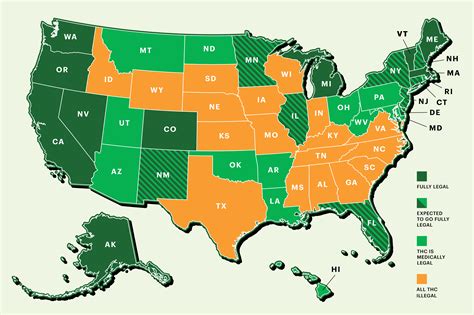Marijuana, also known as cannabis, weed, pot, or dope, refers to the dried flowers, leaves, stems, and seeds of the cannabis plant. This plant is rich in compounds like tetrahydrocannabinol (THC), which has impairing effects, and cannabidiol (CBD), which does not impair cognitive functions. Historically, cannabis use was legal in the United States in the 1800s, often used for therapeutic purposes. However, the development of synthetic painkillers and media attention to cannabis-related violence led to the criminalization of its recreational use in 1937, making access for medical use challenging.
Today, the legal status of marijuana in the United States remains complex. As a Schedule I substance under the Controlled Substances Act, it is considered to have a high potential for abuse and no accepted medical use. Despite this, various states have legalized marijuana for medicinal and recreational purposes, creating a policy gap with federal law. The U.S. Food and Drug Administration holds the federal authority to oversee its use, often clashing with state laws. Federal law enforcement primarily targets criminal networks involved in the illicit marijuana trade, and while federal banking regulators have not formally addressed state marijuana legalization, an appropriations rider enacted since FY2015 prevents the Department of Justice from using taxpayer funds to interfere with state-legal marijuana activities.
In a significant policy shift, President Biden announced a pardon for all prior federal offenses of simple possession of marijuana. This step marks a move towards reconciling federal and state laws regarding marijuana use. In California, cannabis is legal for both medicinal use (for those 18 or older with a physician’s recommendation) and adult recreational use (for those 21 or older). Local laws in cities and counties may impose stricter regulations than the state.
California pioneered the legalization of medicinal cannabis with the Compassionate Use Act in 1996. Since then, the cannabis industry in California has been strictly regulated to ensure safety, product purity, and informative labeling. The state’s approach to marijuana has evolved from merely decriminalizing to fostering a state-legal recreational cannabis industry, while others have removed criminal prohibitions but maintained civil penalties for marijuana-related activities.
For more detailed information on marijuana legislation and its implications, you can refer to these sources: Centers for Disease Control and Prevention, Alternaleaf Concession Program, and the DEA Fact Sheet.
